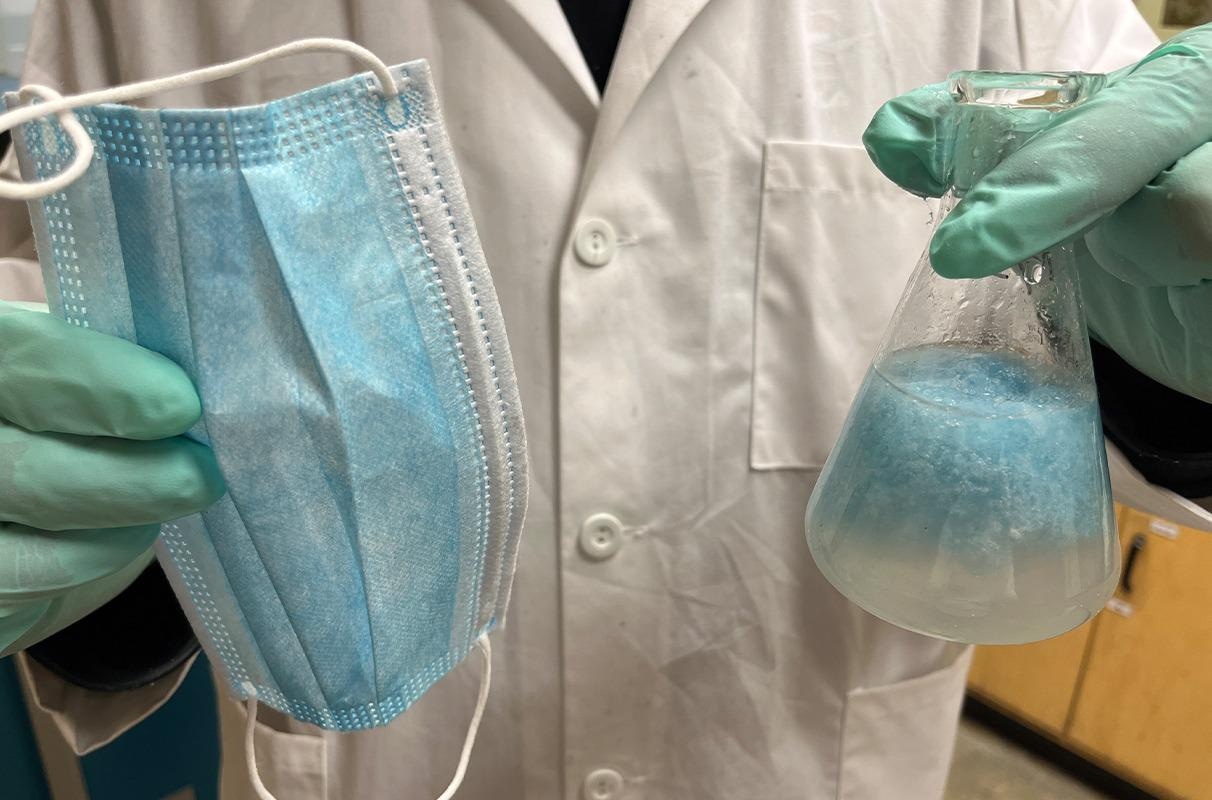Scientists have illustrated the concept of incorporating old masks into a cement mixture to make stronger and more durable concrete. This has coincided with the widespread use of single-use masks during the pandemic which has caused severe environmental issues.
 The WSU researchers developed a process to fabricate tiny mask fibers, ranging from five to 30 millimeters in length, and then added them to cement concrete to strengthen it and to prevent its cracking. Image Credit: Washington State University
The WSU researchers developed a process to fabricate tiny mask fibers, ranging from five to 30 millimeters in length, and then added them to cement concrete to strengthen it and to prevent its cracking. Image Credit: Washington State University
In a study reported in the journal, Materials Letters, a research group from Washington State University has displayed that the mixture that makes use of mask materials was around 47% stronger compared to generally utilized cement following a month of curing.
These waste masks actually could be a valuable commodity if you process them properly. I’m always looking out for waste streams, and my first reaction is ‘how do I turn that into something usable in concrete or asphalt?’
Xianming Shi, Study Corresponding Author and Professor, Interim Chair, Department of Civil and Environmental Engineering, Washington State University
Cement production is considered to be a carbon-intensive process, accountable for as much as 8% of carbon emissions throughout the world. Microfibers are sometimes added to cement concrete to reinforce it. However, they are costly.
The microfiber-reinforced concrete can possibly help decrease the amount of cement required for a project or make the concrete last longer , thereby saving carbon emissions as well as money for owners and builders.
Medical masks consist of fibers that could be beneficial for the concrete industry, as they are made of polyester fabric or polypropylene where the material contacts the skin and an ultra-fine polypropylene fiber for the filtering layers. If they are not used again, disposable masks could remain in the environment for decades and pose a threat to the ecosystem.
This work showcases one technology to divert the used masks from the waste stream to a high-value application.
Xianming Shi, Study Corresponding Author and Professor, Interim Chair, Department of Civil and Environmental Engineering, Washington State University
In their proof-of-concept study, the scientists came up with a process to fabricate small mask fibers. This ranges from 5–30 mm in length and is then added to cement concrete to reinforce it and avoid its cracking.
While their testing was performed, they eliminated the metal and cotton loops from the masks, cut them up and integrated them into ordinary Portland cement. This is considered to be the most common type of cement that has been utilized throughout the world, and the basic ingredient for mortar, concrete and grout.
The scientists blended the mask microfibers into a solution of graphene oxide prior to the addition of the mixture to cement paste. The graphene oxide offers ultrathin layers that strongly stick to the fiber surfaces.
These mask microfibers tend to absorb or dissipate the fracture energy that would add up to small cracks in the concrete. In the absence of the fibers, such microscopic cracks would ultimately result in broader cracks and the failure of the material.
Numerous studies have been performed by the researchers to test their concept that the graphene oxide-treated microfibers could also help enhance the durability of the concrete and safeguard it from frost damage and from deicing chemicals that are utilized on roads.
Also, the researchers anticipate employing this technology in the recycling of other polymer materials, like discarded clothing, to incentivize the collection of such waste.
Zhipeng Li, a graduate student in WSU’s Department of Civil and Environmental Engineering, headed the work. It was financially supported by the U.S. Department of Transportation’s National Center for Transportation Infrastructure Durability and Life Extension.
Journal Reference:
Li, Z., et al. (2022) Upcycling waste mask PP microfibers in portland cement paste: Surface treatment by graphene oxide. Materials Letters. doi.org/10.1016/j.matlet.2022.132238.